-
Magnetic resonance scanner builds first 3D interior maps of brain
-
Could allow treatment of brain disorders
-
Scans up until now 'have not shown the real brain,' say researchers
Harvard scientists have developed hi-tech new methods to explore inside the human brain using magnetic resonance scanning.
Professor Jan Wedeen claims that the rainbow-coloured scans offer the first real insight into the pathways of the human brain's 100 billion cells - and how it works.
‘The brain we’ve been looking at with conventional scans all these years is not the real brain,' says Wedeeen. 'We’re just seeing a shadow of its surfaces.’
.jpg) |
|
.jpg) |
|
A fluorescent 'brainbow' map of the connecting nerve cells in a brain by Harvard's Jeff Lichtman, which shows patterns of fibres interconnecting to form a 3D brain |
|
The 3D maps will allow us to see 'inside' the workings of the brain for the first time, claim the scientists |
Professor Jeff Lichtman, also from Harvard, has developed a related technique used for tracing the connecting pathways between each neuron on animal brains.
Using just three colours he is able to tag nerve cells with a certain colour before tracing the connections - a task that would take hundred thousand years using traditional methods.
Lichtman said, 'The human brain is the most complicated object in the known universe. It holds our memories and our fears, processes information and allows us to see, hear and feel.
'But we don’t have real tools to understand it it. There’s a whole class of disorders of the nervous system that people suspect are due to defects in the connections between nerve cells, but we just don’t have the means to trace the connections.'
These pathways can then be used by scientists to create a 3-D map of the intricate networks that make up our brain.
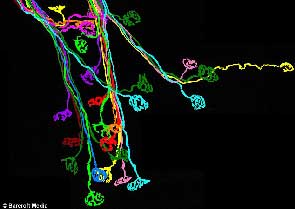 |
|
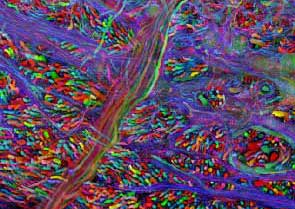 |
|
For a long time it was thought that the brain was a mass of tangled wires, but researchers recently found that its fibers are actually set up like a chess board, crossing at right-angles |
|
Thomas R Insel, the director of the National Institute for Mental Health, said: 'Getting a high-resolution wiring diagram of our brains is a landmark in human neuroanatomy' |
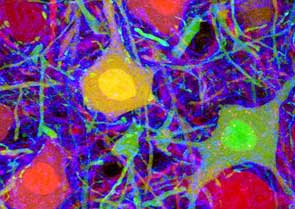 |
|
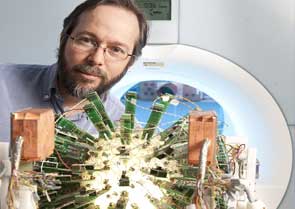 |
|
A team from Harvard Medical School in the USA have set about meticulously logging more than 100 billion nerve cells and neurons in the human brain |
|
Professor Van Wedeen's team has cracked how to 'map' the interior of the brain for the first time |
For a long time it was thought that the brain was a mass of tangled wires, but researchers recently found that its fibers are actually set up like a chess board, crossing at right-angles.
What’s more, this grid structure has now been revealed in amazing detail as part of a brain imaging study by a new state-of-the-art magnetic resonance imaging (MRI) scanner.
Van Wedeen, of Massachusetts General Hospital (MGH), who led study, said: ‘Far from being just a tangle of wires, the brain's connections turn out to be more like ribbon cables - folding 2D sheets of parallel neuronal fibers that cross paths at right angles, like the warp and weft of a fabric.
.jpg) |
|
.jpg) |
|
Geoff Lichtman's 'tagging' technique 'lights up' the fibres of a mouse brain |
|
Using advanced MRI screening technology they are uncovering the anatomical features of our minds that have previously been undetectable |
|
|
|
|
.jpg) |
|
.jpg) |
|
A map of the human brain showing the connecting nerve cells in our minds by Van Wedeen |
|
Curvature in this image of a whole human brain turns out to be folding of 2D sheets of parallel neuronal fibers that cross paths at right angles |
‘This grid structure is continuous and consistent at all scales and across humans and other primate species.’
Thomas R Insel, the director of the National Institute for Mental Health, said: ‘Getting a high-resolution wiring diagram of our brains is a landmark in human neuroanatomy.
‘This new technology may reveal individual differences in brain connections that could aid diagnosis and treatment of brain disorders.’
The Connectom MRI scanner was installed at MGH last year and can visualise the networks of criss-crossing fibers – by which different parts of the brain communicate with each other – in 10-fold higher detail than conventional scanners, according to Wedeen.
He said: ‘This one-of-a-kind instrument is bringing into sharper focus an astonishingly simple architecture that makes sense in light of how the brain grows. The wiring of the mature brain appears to mirror three primal pathways established in embryonic development.’
As the brain gets wired up in early development, its connections form along perpendicular pathways, running horizontally, vertically and transversely.
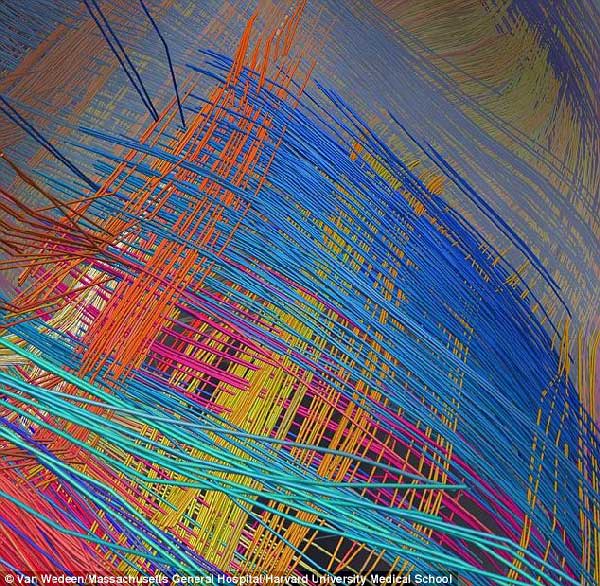 Revelation: The fabric-like 3D grid structure of connections in a monkey brain
Revelation: The fabric-like 3D grid structure of connections in a monkey brain
This grid structure appears to guide connectivity like lane markers on a highway, which would limit options for growing nerve fibers to change direction during development.
If they can turn in just four directions: left, right, up or down, this may enforce a more efficient, orderly way for the fibers to find their proper connections – and for the structure to adapt through evolution, suggest the researchers.
Obtaining detailed images of these pathways in human brain has long eluded researchers, in part, because the human cortex, or outer mantle, develops many folds, nooks and crannies that obscure the structure of its connections.
Although studies using chemical tracers in neural tracts of animal brains yielded hints of a grid structure, such invasive techniques could not be used in humans.
It’s thought that with previous technology 25 per cent of the brain’s structure was revealed – the new scanner shows 75 per cent of it.
‘Before, we had just driving directions. Now, we have a map showing how all the highways and byways are interconnected,’ said Wedeen. ‘Brain wiring is not like the wiring in your basement, where it just needs to connect the right endpoints. Rather, the grid is the language of the brain and wiring and re-wiring work by modifying it.’
Results of the study appear in the journal Science.
(Source : www.dailymail.co.uk)
.jpg)
.jpg)




.jpg)
.jpg)
.jpg)
.jpg)
